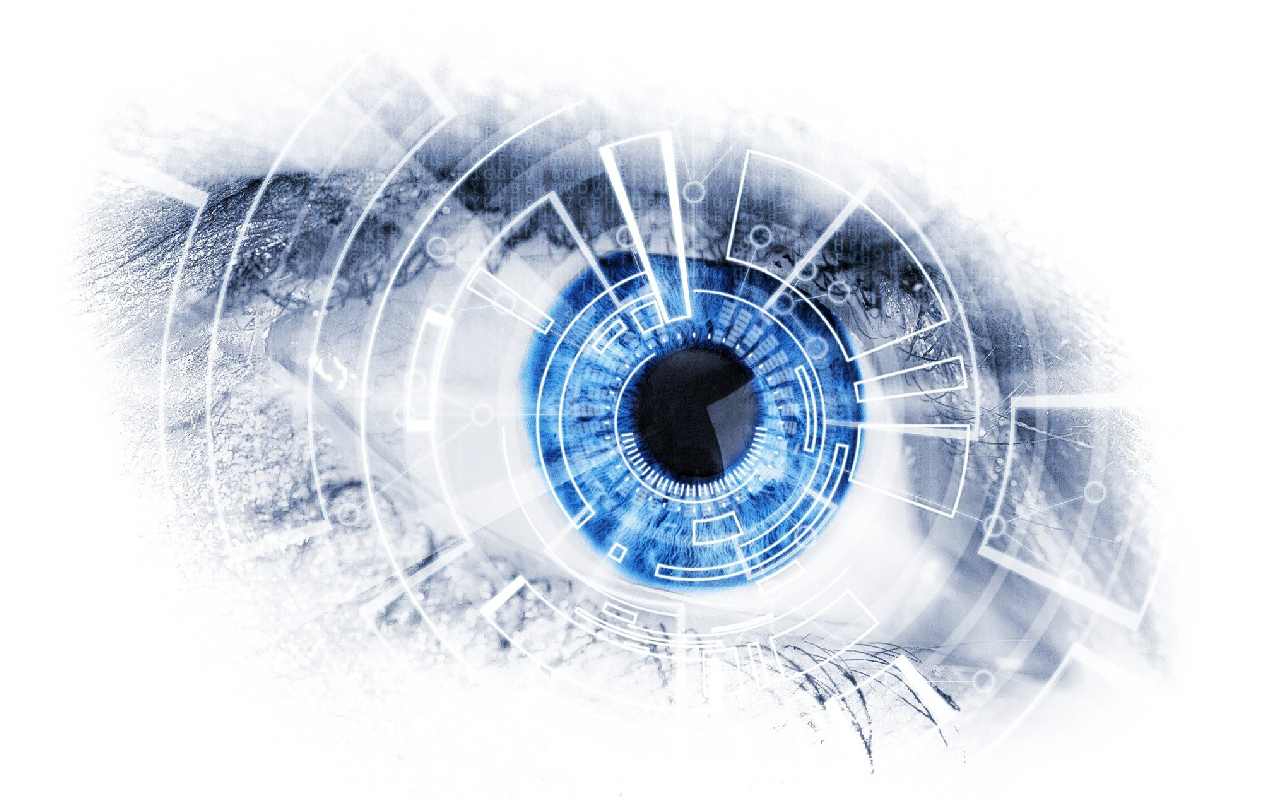Tag: AI
The retail industry is evolving. And AI is at the forefront of this evolution. Retailers are using artificial intelligence to create innovative new products, solve problems and increase customer satisfaction.
In the retail industry, artificial intelligence is not a new concept. In fact, big data and machine learning have been essential to retailers for years now. AI has been used by many different retailers in order to optimize operations and increase revenues
From Walmart’s virtual shopping assistant in its app to Amazon’s Alexa platform, there are many ways that AI can help retailers improve their operations and profits.
AI has already begun improving the way companies like Nike, Microsoft and Walmart manage their supply chains, reduce labor costs or offer shoppers with personalized product recommendations when they log on to the company website.
This article will take a look at how different famous retail companies use artificial intelligence in their operations, what benefits does it have to offer for both customers and employees alike not just today but also tomorrow!
What is the meaning of the retail sector?
The retail sector is the economic sector involved in the sale of goods to consumers. This includes any business which provides services or products. It also encompasses wholesale trade and storage as well as rental services that are typically offered by retailers.
What is Artificial Intelligence?
Artificial Intelligence is a field of computer science and engineering that deals with computationally intelligent agents, such as self-driving cars or self-learning robots.
An artificial intelligence system learns from general knowledge about concepts in the real world through data mining and pattern recognition. In short, AI helps to augment human decision-making when it can’t be done without humans.
Walmart


Walmart is a multinational corporation that operates a chain of hypermarkets, discount department stores and grocery stores. As of 2019, Walmart operated 11,847 stores.
Walmart uses AI to manage inventory and reduce labor costs.
Walmart has been using AI for some time now in order to manage its inventories. For example, Walmart uses machine learning software so it can monitor its supply chain and identify when there is a need to restock certain products on the shelves at specific stores. The company also analyzes past sales data so that it can predict what will sell and when, and then uses that information to ensure the right products are always available for its customers.
Amazon
Amazon is American electronic commerce and cloud computing company with headquarters in Seattle, Washington. It is the largest internet-based retailer in the world by total sales and market capitalization.
AI has been used by Amazon for years now. However, only recently the company started using artificial intelligence in order to create innovative new products such as Amazon Alexa.
This AI platform was introduced in 2014 and has since become one of the company’s biggest assets.
It can be found on all kinds of devices – from speakers to microwaves – that are connected through an app that makes it possible to order Amazon products, play music or even get news updates.
Alibaba Group
Alibaba Group is one of the most comprehensive business-to-commerce companies in the world. It was founded by Jack Ma and Eric Zhang in 1999.
Aside from being a direct sales platform to sell their products, Alibaba also has offline stores all over China. From retailing to logistics to payment processing power, Alibaba can do it all!
With the help of AI, Alibaba group is able to optimize its operations and increase revenues.
One way they do this is by writing thousands of product descriptions in seconds. How does the company do it? With the help of AI, of course.
Alibaba doesn’t have to pay individual content writers for compelling product descriptions; Instead, they turn to artificial intelligence technologies for help and not only cut costs, but also cut time for content production.
Alibaba has been using AI in order to help with logistics, product recommendations and even forecasting demand levels based on weather patterns for its offline stores so that they know how much inventory should be kept at each location.
Carrefour
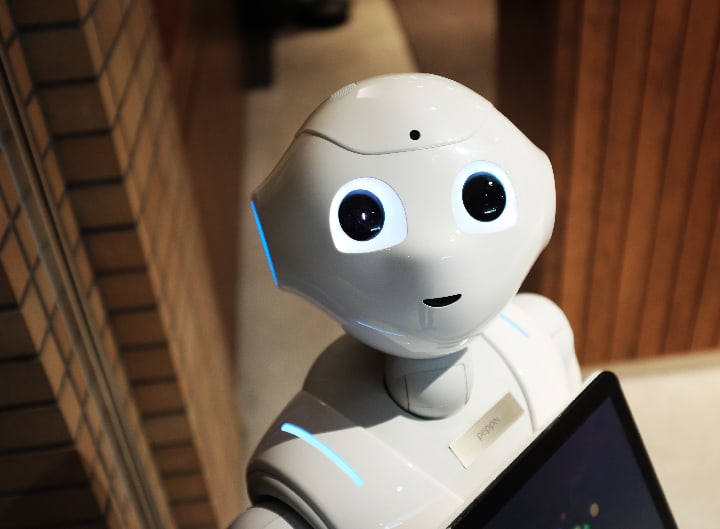

Carrefour, founded in France in 1959 is one of the world’s largest retail groups. It runs a global network of hypermarkets, supermarkets, and convenience stores, with 12,225 outlets in more than 30 nations as of January 2021.
Carrefour started using AI in order to help with inventory management and optimizing its supply chain processes. The retailer also created an app powered by AI which will be able to offer customers a checkout-free shopping experience.
However, the company decided to include futuristic ways of utilizing artificial intelligence such as having robots working at their stores. These robots help with stock management by patrolling and monitoring if the shelves are full.
Conclusion
Artificial intelligence has been around for a while now and it’s already impacting businesses in tangible ways.
Whether you need help with inventory management, optimizing your supply chain processes or even creating innovative new products like Amazon Alexa, AI is here to help.
When companies use AI they are able to cut costs and time needed for content production by turning instead to artificial intelligence technologies such as writing thousands of product descriptions at the same time.
If this sounds interesting and captivating enough for you let us know so we can start helping you get on top of things today.
The world of video games is highly engaging and even addictive. Defeating your opponent, winning a race, unlocking the characters, finishing all the missions – these objectives are what keep players so hooked on the games and generate a huge amount of revenue that is projected to reach $180 billion in 2021.
The rapid phase in which the games evolved over time is also astonishing. We went from pixelated game characters to high-level graphic gameplay where it is increasingly challenging to differentiate if it is a movie or a game.
One of the reasons that helped the gaming industry evolve and progress so much is artificial intelligence. Due to the versatile use of AI, almost any type of game played today uses this technology to some degree.
Before exploring the applications of AI in the gaming industry, let’s find out what artificial intelligence is and what AI in Gaming means.
What is Artificial Intelligence?
From automation to prediction, artificial intelligence has brought many benefits to the world, but what is it really?
In simple words, AI is a field of computer science that uses data to mimic human intelligence and perform tasks that would normally be performed by humans.
Machine learning algorithms train and learn on the provided data over and over again until they reach the desired level of precision. This helps the AI solution identify patterns and make decisions without the need for human intervention.
What are the potentials of AI in games?


Artificial intelligence has many potential benefits to the gaming industry. Techniques like deep learning and neural networks already make the gaming experience as engaging as ever.
However, the future of AI in games can yield amazing results, such as unlimited NPC customization or scenario personalization, the same can be applied to landscape and game elements. Without further ado, let’s explore in more detail.
Helping with game development
Game development is a tedious task. The creation and design of characters, maps, and missions are at the core of the gaming experience and require a lot of time from developers and designers.
AI helps to automatically generate different content, such as the character’s personality and facial features, different item elements, landscape details, etc. This takes a great burden off programmers and speeds up the entire game development process.
By AI helping to create settings and characters, games will be able to offer a diverse variety of landscapes, elements and characters and not repeat them over and over again.
Making games more interesting


Remember when we said that artificial intelligence learns from data? The same goes for AI in games. Each player action is a data point that the AI can use to analyze and make the gaming experience more interesting.
Just like when you go to your Amazon account and all product suggestions are customized to your liking, the same can be done with games. Truly good customization can be done when big data is available – in Amazon’s case, it’s your search history, product clicks, etc.
When it comes to games, this data is the actions of the players – interaction with the characters, phase of mission progression, player behavior, use of items, etc.
Artificial intelligence algorithms can study all this data and adjust game characteristics (difficulty, missions, gaming phase) to suit the player’s personality.
The personalized gaming experience makes the gaming process more user-friendly and more engaging.
Improving game graphics
Some old video games are connected to the best childhood memories for many of us. And when nostalgia hits us and we decide to play them again, we notice that the graphics don’t even come close to what is the current standard.
This video game community encouraged the use of machine learning algorithms that improve the graphics of old games and make them look like new.
Red Faction AI Upscale Textures. Source: moddb.com
The image above is a great example of how AI can be a powerful tool to significantly improve graphics, even when it comes to older games that are so pixelated.
The technique for revamping the graphics is called AI upscaling. AI upscaling is a practice that can increase image quality up to 4x and provide higher resolution. It helps make the details of the original image more visible and removes all noise from the original image.
Conversing with NPCs
NPC in video games refers to a non-playable character that is controlled by a computer rather than a player. They are used in games to advance the game’s plot, help players with tips, and more.
In today’s video games we can already chat with NPC, however, it is not perfect. You have a predetermined set of questions and the NPC gives predetermined answers. Yes, it can be fun, but what if it could be even better? What if you could have a natural conversation with these computer-controlled characters?
With the help of AI, there is the possibility to take these interactions to the next level. We already have some examples of AI-powered solutions like chatbots and virtual assistants that can have natural conversations with humans.
How is this possible? With the help of the knowledge base and natural language processing (NLP), artificial intelligence algorithms give chatbots a better ability to understand the question and provide a satisfactory answer.
A similar approach can also be used for NPCs to make dialogue more fluid and interesting for players.
Conclusion
The gaming industry became one of the most profitable business sectors, which is expected to reach $ 256.97 billion in 2025.
The high level of technological innovation already provides a better gaming experience for billions of players around the world. However, advancements in AI look very promising for the gaming industry.
It has the potential to not only help developers with faster game development but also enhance the entire experience to a level such that it will be challenging to distinguish a game from reality. This is already happening with advances in virtual reality and artificial intelligence.
So, with all these details in mind, surely an interesting journey awaits us when it comes to the advancements in the gaming industry.
Computer vision is a field of artificial intelligence (AI) that deals with allowing computers to process the analysis and understanding of data from digital images.
This solution is used in many business sectors such as retail, manufacturing, security, insurance, and more.
In fact, the global market for the industry was $ 10.9 billion in 2019 and is expected to grow to $ 17.4 billion in 2024, resulting in a compound annual growth rate of 7.8%.
So what makes this solution so widely used, and how exactly can it help your business? We’ll find it all in this article, but first, let’s see how computer vision really works.
How does computer vision really work?


The goal of computer vision is to understand images as humans do. However, the truth is that computers view such images very differently from humans.
For a computer, images are a combination of pixels, and the pixels themselves contain different numerical values. These numbers are essential for machine learning to be trained and taught to understand the images.
Computers look at each pixel in an image and try to recognize patterns to understand what the image might contain.
At the beginning of the learning phase, machines make mistakes; however, with more data and trial and error, the guesswork becomes more and more accurate.
Neural networks are another way that computers recognize complex images. The first neural network layer identifies the edges of the image. The following layers detect the shapes of these edges. In the end, the computer gathers all this information to understand the image.
Such technology paves the way for solutions such as facial recognition, object recognition, and much more.
How is computer vision used in business?
Companies are constantly looking for solutions that automate processes and provide high-quality service. This is exactly why the solution is so popular among businesses from every sector. Let’s take a closer look at the use cases and benefits that computer vision has to offer to companies.
Document scanning and classification


Although we have entered the digital age, we are still bombarded with a considerable amount of paper documents. Contracts, reports, invoices, certificates – these are just a small part of the physical documents that are stacked on our desks and shelves.
However, taking up a large part of our office space is not the only problem with physical documents. Whenever it is necessary to find certain clauses or elements in physical documents, it results in very time-consuming and tiring manual work.
This was further aggravated after the pandemic, as many companies had to review contracts and find appropriate clauses related to force majeure.
With the help of Optical Character Recognition (OCR) and Natural Language Processing (NLP), computer vision solutions can analyze the information within physical documents, making it possible to understand the data contained in these documents and digitize them. in seconds.
Users can later search the documents or any clause within these documents simply by inputting the text that the file might contain.
What do 100% text searchable documents mean?
- Higher productivity
- Reduced human error
- Cost reduction
- Less stressful work
Medical diagnosis
One of the most powerful applications of computer vision is in the healthcare sector, as it can save more lives.
As the solution can be trained to identify objects in digital images, it can be used to detect disease and illness at an early stage from X-rays, MRIs, or CT scans.
Deep learning algorithms can be trained from patient data to find common disease patterns. For example, in the case of melanoma, using the combination of neural networks and computer vision, the image of the patient’s skin is analyzed in seconds and compared to the predefined dataset. This process can be faster and more accurate to detect if the patient has signs of harmful disease.
In the same way, heart problems such as arrhythmias can be identified by computer vision by analyzing electrocardiograms.
The possibilities the solution has to offer to healthcare are immense and remain to be explored.
Reinforced security
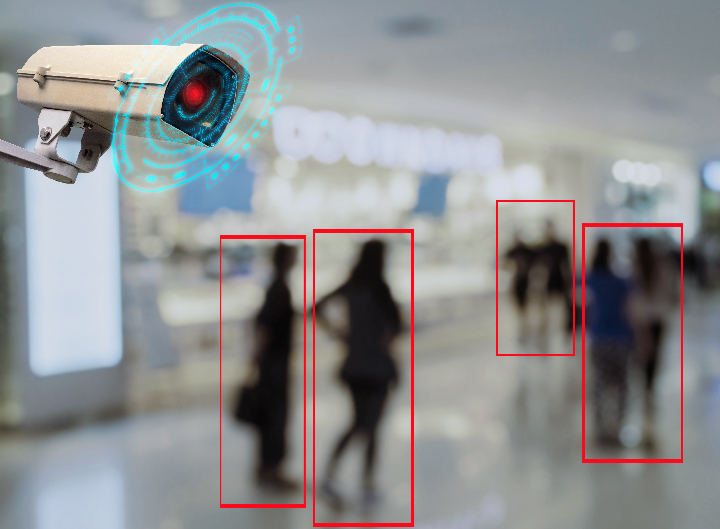

The ability of computer vision to detect, classify, and recognize different objects opens many doors to opportunities in the security industry.
IP cameras powered by AI means that companies can have 24/7 surveillance where any prohibited object, unusual behavior, or unauthorized person can be instantly identified, triggering alerts to human personnel for interference.
Integrating such solutions into company security systems helps prevent crime while eliminating the need for additional staff and reducing costs.
Accident prevention
Employee safety should be the top priority for all employers, especially in warehouses and industrial jobs, where accidents are more likely to occur.
Providing your staff with the proper equipment and safety training is essential to keeping the workplace safe, but never a full guarantee against accidents. Fortunately, with the help of computer vision, employers can take staff safety to the next level.
Such systems can be trained to monitor how employees interact with equipment and monitor other details of worker behavior.
Computer vision solution compares the behavior of workers with their data set and understands whether or not they comply with safety regulations.
With the help of such solutions, companies can automate the detection of hazards such as:
- Safety zones and precautionary area compliances;
- Unsafe operation of the machine by workers;
- Risky behaviors that contribute to safety hazards;
- Much more.
Smart farming


One of the sectors that benefit the most from automation is agriculture. Advanced AI-powered technologies became an essential part of reducing costs and increasing productivity for farmers. And at the core of these solutions is computer vision.
With the help of this technology, farmers can automate visual inspections of fruits and vegetables. This approach helps them detect flaws, contaminants, or defects much more accurately.
Farmers went one step further and combined the potential of computer vision and drones. Camera-equipped drones fly over large areas of crops. Multispectral imaging cameras identify unhealthy crops due to lack of water or insects and inform farmers about it.
This frees farmers from time-consuming manual inspection and focuses their attention only on crops that are in real need of attention.
Conclusion
The examples mentioned above were only a small part of the business computer vision use cases. Due to benefits such as automation, increased precision, and higher productivity, more and more industries are looking for AI-powered solutions to improve their business operations.
If you also want to take advantage of similar AI solutions and are considering implementing them in your business, schedule a free consultation call with our AI team and let’s discuss how our partnership can take your company to the next level.
Lowering product prices, reorganizing space, introducing new products, entering new markets – do you think companies make these decisions at random?
Not really. Most businesses take decisions after collecting and analyzing valuable information from their data. This is the reason why business analytics is an important concept, as it helps companies analyze historical data with the use of statistical methods to make informed decisions.
What created the need for AI in business analytics?
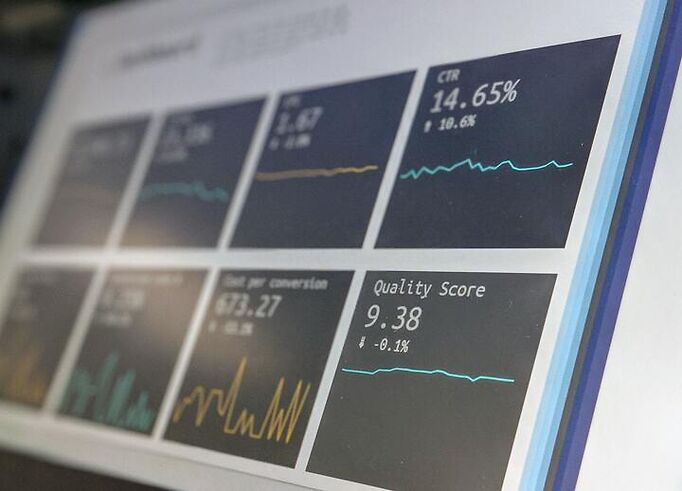

Today more than ever, companies collect a large amount of data. IoT devices, GPS networks, security tools, call logs, website analytics – these are just part of the tools that collect valuable data for businesses to analyze and find important information.
The problem is that big data is getting bigger and harder for standard business analytics software to process.
Imagine the amount of information that industry giants like Amazon are collecting. It is impossible to depend on traditional business analytics tools to extract valuable information and create strategies from such an immense amount of data.
That’s why companies combine business analytics with the power of artificial intelligence to democratize data and improve adoption.
Artificial intelligence in business analytics
We know that artificial intelligence is a field that builds intelligent machines that are capable of solving problems and performing tasks that would require human intelligence.
For artificial intelligence systems to learn and function as intended, they need data. That’s why AI in business analytics is a perfect use case, as business analytics is all about data and that’s exactly what AI needs.
Implementing AI solutions in business intelligence means processing this massive amount of data in a matter of seconds. In this way, managers can easily analyze data and export valuable information that can be used to improve decision-making and strategy building.
Artificial intelligence systems can connect data from several different sources and provide real-time analytics as well as notifications. This way companies can immediately act on the insights as soon as the data enters their system.
This helps managers not only in long-term decision-making but short-term day-to-day strategies as well.
However, in addition to the fact that AI helps transform raw data into an understandable form in real-time, another great benefit is its prediction capabilities. This is also known as predictive analytics.
Predictive analytics predicts future events and outcomes with the use of real-time/historical data, as well as machine learning techniques and statistical algorithms.
AI-powered business analytics can provide companies with reliable predictions on future trends such as price changes, customer responses, and more. This is a powerful tool that helps companies be proactive, ahead of competition and less likely to be caught off guard.
What benefits does this bring?


- Cost-effective – AI automates the time-consuming process and frees people from manual work. The system sends alerts that require human attention only in case of real need, thus reducing the cost related to human personnel.
- Greater efficiency – Implementing AI in business analytics means classifying raw data instantly and sorting it faster. This process reduces the steps that were previously necessary, therefore, provides greater efficiency to companies.
- Greater precision – Artificial intelligence technology not only automates certain processes but also eliminates cases of human error. As we said, handling large amounts of data is exhausting and time-consuming, increasing the chances of errors and mistakes. However, replacing this process with AI improves accuracy and quality.
Conclusion
Business analytics helps companies increase their market share, drive profitability and revenue. It is an essential tool for understanding how different processes work and what can be done to improve the overall business performance.
However, today’s competitive environment, as well as the vast amounts of data available, pushed companies to think outside of the box and proactively lead the market. That’s why implementing AI in business analytics today is not a “nice to have” feature, but a requirement to keep up with the competition.
If you want to leverage your data, improve operational accuracy, efficiency, and reach your goals faster, schedule a free consultation call with our artificial intelligence experts today and let’s start building something great together.
The HR department is responsible for developing, reinforcing and optimizing the culture of an organization. Some of the human resource specialist’s tasks include hiring, onboarding, and training employees. All of these are essential to business success.
However, HR tasks became even more challenging due to the limited availability of professional staff, the recent pandemic, and other changes in the economic, political, or social climate. All of this created a need for a tool that would assist HR professionals and augment their capabilities.
For that same reason, companies began integrating artificial intelligence solutions into their HR processes to further improve operations. In fact, Gartner research showed that by 2022, 30% of companies are planning to use AI-based solutions in their human resources.
Listed below are the reasons why companies implement artificial intelligence to improve their HR operations.
Connecting the right candidates with the right companies


Hiring the right candidates has long been a goal of every company. Therefore the hiring process and techniques have been changing and evolving to ensure that the hired employee is the right person for the team.
Today, companies understand that for a team to be successful, not only the technical skills of the staff but also their cultural fit and soft skills are equally important. Full evaluation of all these details can take months.
For this exact reason, employers use the power of AI that can analyze millions of data points in seconds. With the help of Natural Language Processing (NLP), artificial intelligence systems can compare candidates’ CVs with each open position, check if the two are relevant and if the skills/experiences and personal traits of the candidates match the job requirements.
In addition, AI looks at the location of the applicant, desired salary, and other details that would be important to the selection process. With all this information, AI will narrow down the potential candidate list and send only the best matches to the HR department. This speeds up the process considerably and results in higher quality work
Improved onboarding


Companies use a variety of onboarding techniques to ensure that new hires feel valued, understand their role, and company culture. Effective onboarding techniques motivate employees, increase their productivity, and improve their commitment to the company.
One of the ways to speed up the onboarding process is with the help of chatbots. New hires can ask AI-powered chatbots any questions they may have and chatbots, with the help of NLP, will break down the question and compare it to the data in their knowledge base or to the previous answers that made employees in similar situations satisfied and happy.
In this way, employees can get answers to any basic questions about office protocols, connection to office Wi-Fi, security and privacy, etc. Chatbots facilitate onboarding by better navigating the process and providing 24/7 access to any required information.
Artificial intelligence systems also help new hires with networking by analyzing data related to employee interests, professional experiences, physical location, etc., and based on this data, they connect with like-minded colleagues. The same systems can also understand which connection would help new hires be more productive and introduce them to each other.
Staff development
Professional development is very important to employees, and while hands-on experience is one way to do it, online courses, conferences, and other sources of learning are just as significant.
However, each employee has their own preferences and learning requirements. Artificial intelligence systems can provide a personalized development program for an employee taking into account their knowledge, skills and job position.
This approach automates the entire process, improves engagement, and saves time for employees as they learn faster and more efficiently.
Helping with the paperwork


HR professionals have to deal with a large number of paperwork (resumes, background checks, company policies, job descriptions, legal documents, etc.). This repetitive and monotonous task places a great burden on HR specialists and can pose a risk to their physical and mental health.
AI addresses this problem with solutions based on Optical Character Recognition (OCR) and Natural Language Processing (NLP) that use intelligent algorithms to analyze the information within physical documents, making it possible to understand the data contained in these documents and digitize them in seconds.
This takes the burden off HR professionals as they can quickly find and extract the specific information they are looking for in this large number of documents, classify text, and much more.
Conclusion
Artificial intelligence offers numerous benefits to human resources. Thanks to these solutions, HR professionals can focus on more meaningful goals, such as building closer relationships between employees and companies, while repetitive tasks can be automated and controlled using AI solutions, resulting in:
- Saved cost
- Improved efficiency
- Human error reduction
- Faster decisions
Are you interested in similar solutions? Schedule a free consultation call with our AI experts and we will get back to you as soon as possible.
Customer churn refers to the rate at which customers stop using the company’s services or products for a specified period of time.
It has a significant negative effect on businesses as it reduces revenue and profits. In the US alone, $ 136.8 billion is lost annually due to avoidable customer churn.
For exactly that reason, it is important for a company to have customer retention strategies in place. Retaining customers not only helps businesses establish valuable customer relationships, but also increases profitability.
In fact, acquiring new customers costs 5-25X more than retaining existing ones.
Today, especially in such a competitive economy with wide availability of competitors, companies began to pay more attention to customer churn and have been implementing different strategies to prevent clients from leaving. However, AI has proven to be the most effective solution when it comes to customer churn.
Let’s take a look at how Artificial Intelligence helps companies with customer retention and churn prevention.
Churn prediction


One of the biggest benefits of AI is that it can help companies predict which customers are likely to stop using their services or products.
How exactly can AI do that? The main characteristic of machine learning algorithms is to find links and patterns in historical data, learn from them, and apply what they have learned to new data.
The same applies to predicting the churn, from the data collected from customers, companies can identify the activities that contribute the most to the loss (decreased engagement, dissatisfaction, etc.). Later, machine learning algorithms are fed with this data, trained to identify such activities in user behavior and alert businesses about a potential churn.
The ability of artificial intelligence to accurately predict the future churn rate helps companies identify the causes of churn, implement effective retention strategies, and ultimately improve profitability.
Let’s sump up the necessary stages from an effective customer churn prediction:
- Data collection – The better the quality of the data, the greater the confidence in decisions. With numerous user interactions with your services, the amount of data can be overwhelming. Ensuring good quality data translates to better results.
- Feature selection – To get the best result, we need to focus on the features that contribute the most to our output (churn). Including irrelevant features in our data can damage the accuracy of the model.
- Deploying machine learning models – We feed the correct data to our machine learning model to get the prediction that suits your needs.
- Prediction – Finally, after all these steps, you get the churn prediction and can make a business decision based on historical data, not intuition.
Going beyond prediction
While churn prediction is a vital part of customer retention, it doesn’t fully address the issue. Companies must employ various promotional strategies to ensure that the customer interacts with the business again and continues to use its products/services.
Here, as in the previous example, artificial intelligence can be a powerful tool to achieve these goals.
Prediction alone does not mean that the customer will not leave your business. To ensure customer retention, companies should approach users with incentives.
It is important to offer the customer a discount or promotional program to show that you care. Artificial intelligence systems can automate such activities while taking into account what churn stage the client is in.
Artificial intelligence can also determine what type of promotional offer can achieve the best result for the highest engagement and retention for each individual customer. Based on this, the system can automatically personalize the promotional offer without the need for human participation.
Conclusion


Today, one of the main goals of any business is to retain customers for as long as possible, as it boosts the revenue of the company and increases the lifetime value of the customers.
Artificial intelligence and machine learning are the perfect solutions for customer retention and churn prevention. Information and analysis based on customer data can be delivered to the company’s business systems and dashboards, allowing them to be proactive and ensure that their clientele continues to use products/services.
If you want to improve your customer experience and reduce churn rate, schedule a free consultation call with our AI experts and let’s see how we can get the most out of your data.
The manufacturing industry is growing rapidly. The industry market size measured by revenue reached $ 5.6 trillion in 2021 and is expected to grow further by 5.9%.
One of the reasons for such expansion is the use of robotics and artificial intelligence that has already caused the change to be called the next industrial revolution.
As we know, Artificial Intelligence uses data and computers to perform tasks that would normally require human intelligence and participation. But how exactly can the manufacturing industry benefit from such technology?
Predictive maintenance
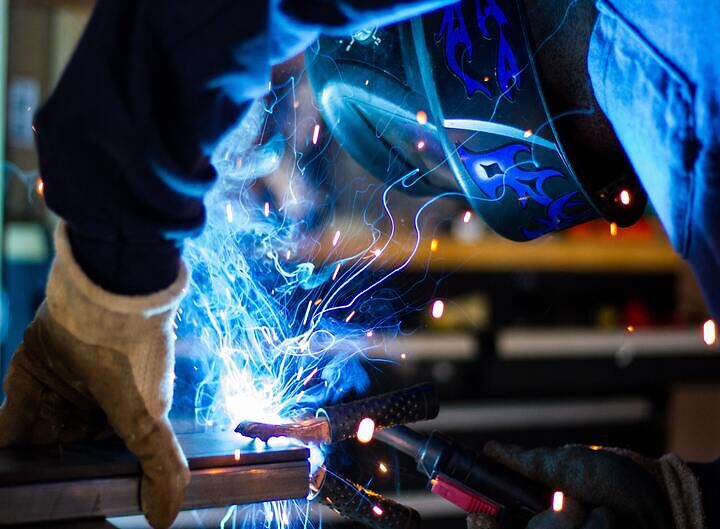

Modern warehouses are equipped with various sensors that record data from different pieces of equipment and operations. This type of real-time and historical data is what predictive maintenance solutions use to track and predict the health, condition and performance of assets.
By taking into consideration details such as temperature, machine operating speed, lubrication, etc., predictive maintenance provides warnings and alerts about possible future machine failures.
With the help of similar solutions, warehouses can have constant analysis and can access benefits such as:
- Improved equipment uptime by 20% percent;
- Reduced maintenance costs by 18 to 25%;
- Increased productivity due to minimized likelihood of unscheduled equipment downtime.
Intelligent Process Automation (IPA)
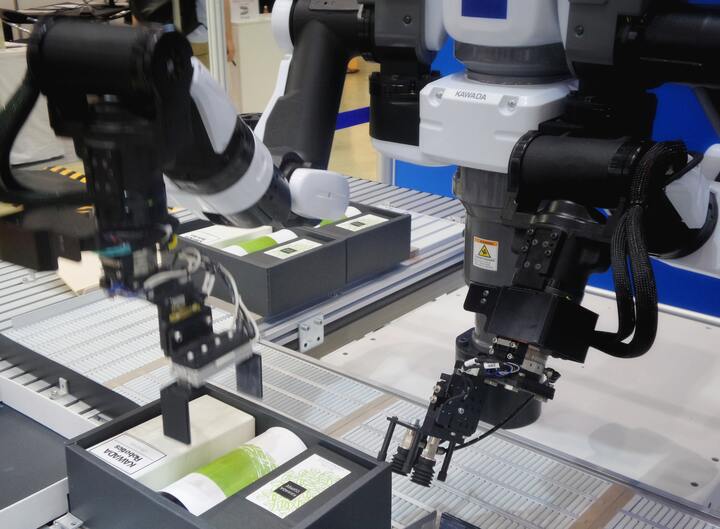

One of the most important applications of automation is manufacturing. However, this process became even more important when combined with artificial intelligence. The fusion of automation and AI is known as Intelligent Process Automation (IPA).
What makes it so different from standard robotic automation? It is the ability of AI systems to find patterns in data, learn from data sets, and perform environment-based tasks without the need for human involvement.
For manufacturers, this means:
- 24/7 production;
- Increased accuracy;
- Decreased operational costs;
- Better scalability.
Quality assurance
The production and guarantee of high-quality products are vital for manufacturers and for a positive image of their brands. To that end, quality assurance procedures are implemented to ensure that the final product meets the desired quality criteria.
Because AI use cases are so versatile, manufacturers have started using it to improve their QA operations. The reason for this is that manufacturers achieve quality inspections faster, with higher accuracy and at lower costs with the help of AI.
Manufacturers can teach AI systems what kind of product features are considered acceptable (curves, colors, edges, etc.). Subsequently, with the help of computer vision technology, the machines inspect each product and independently decide whether the product meets the predefined criteria.
Generative design
Not only can AI systems help with the manufacturing process, but they can also be helpful during the product design process. Designers can tell the artificial intelligence system the goals of product design, smart algorithms can then test all possible variations with regards to existing manufacturing constraints and ultimately find the most optimal solution. This helps companies develop and find design solutions that would never cross the human mind.
Logistics optimization


For manufacturers, the optimal space allocation within the warehouse is just as important as the other things mentioned above. Since artificial intelligence systems can capture patterns and data from manufacturers, they can suggest the layout management by taking into account the capacity of the space, identify the most used materials and products and give recommendations on how and where to place them, as well as suggest the suitable staff quantity for smooth operation.
Conclusion
With the increase in the use of smart devices and sensors, the manufacturing sector is collecting a significant amount of data and it is a perfect use case for the application of AI.
Using big data, artificial intelligence systems can identify trends and patterns that then help manufacturers with process optimization, inventory control, maintenance predictions, and many more.
Despite the many benefits of AI, Industry 4.0 is still in its early stages and we have yet to see many more innovative applications of AI in the manufacturing sector.
Do you want to boost your projects with innovative AI solutions? Contact our team for a free consultation and we will make sure to get back to you as soon as possible.
One of the things that are certain is that education should be one of the highest priorities of every society. Exactly through education, it is possible to prepare individuals with the necessary knowledge and skills that produce greater innovation, greater productivity and newer technology – all the things that are necessary to overcome challenges and discover new horizons.
However, just as innovation depends on education, it is also the other way around, since education depends equally on innovation. Innovation improves and enriches teaching for both students and teachers and makes the process more enjoyable and effective.
One such innovation in the education sector has been Artificial Intelligence (AI). AI is a branch of science concerned with building intelligent machines capable of performing tasks that would normally require human intelligence.
And while AI is applied in almost every industry, like energy or retail, how exactly does it benefit the education sector?
Personalized learning


For many years, all students in a classroom were taught the same program in the same way. This was because it was impossible to provide each individual with a personalized learning experience due to a lack of resources.
However, with advances in technology, personalized learning has enhanced the educational process with a personalized approach to the strengths, needs, abilities, and interests of each student.
Artificial intelligence algorithms with the help of data related to the knowledge, skills and performance of students, create learning paths that are tailored to the needs of learners. These paths are constantly changing based on student performance.
Handling administrative tasks


Educational institutions have to deal with an enormous amount of administrative procedures related to admission applications, study records, certificates, etc.
It is often the case that educational institutions do not have sufficient staff or resources to carry out such lengthy administrative procedures. This is exactly when AI can be extremely useful for schools and universities.
With the help of AI-powered systems, educational institutions can automate and streamline the admissions process, reducing manual work on staff and eliminating human errors.
Intelligent systems can analyze applicants’ data and decide if they meet certain admission criteria, as well as calculate the probability of student success based on predictive analytics, before passing it for confirmation to human agents, this helps employees to focus on more meaningful tasks and create a better experience.
Managing inquiries with chatbots
Universities receive many repetitive inquiries that take up a lot of staff time. However, educational institutions are tackling this problem by taking advantage of AI-powered chatbots. AI chatbots use machine learning algorithms to understand words, have a natural conversation, and respond to queries. Such smart systems learn based on data and improve with time.
In this way, universities can automate and provide 24/7 support to students and interested individuals. The student recruitment team benefits from chatbots as they streamline the admissions process. However, chatbots are not only beneficial for potential students, but also those who are already enrolled. Many are interested in their curriculum, class changes, academic calendar, etc.
Conclusion
It is important that universities and schools constantly innovate and adapt to recent trends in order to be successful. With increased competition in the education sector, innovative approaches such as artificial intelligence are one of the main factors that define success.
Personalization and constant support are something all students look forward to. Striving to tailor service to the specific needs of students shows that the university cares about students and is willing to go the extra mile.
Want to enhance your educational institution with similar AI solutions? MaxinAI can help you make implementation as simple as possible. Just schedule a free consultation call with our AI experts and let’s see if we are the right fit for each other.
As in most industries, we see a growing impact of artificial intelligence in the financial sector.
The use of AI technologies has helped banks, fintech, and other financial institutions streamline and optimize operations such as credit risk management, trading, fraud identification, money laundering prevention, and more.
Due to the automation and process improvement that AI brings to the industry, it is no wonder that 70% of all financial services companies use AI and ML in their operations.
With all that in mind, let’s find out what are the main use cases of AI solutions for the financial sector and how businesses can benefit from the implementation of this technology in their companies.
Financial document data extraction


Today, the financial sector is bombarded with a myriad of documents related to transactions, data security, government and corporate regulations, and much more.
The burden of managing so much paperwork represents a significant challenge for financial institutions as it is costly and time-consuming work, forcing staff to perform repetitive and demotivating activities.
However, with the help of AI, deep learning, and computer vision, financial firms can make manual data handling a thing of the past.
Automating manual data handling with AI means allowing the system to identify and extract all the key data from financial documents at a much faster speed, with greater precision and at a lower cost.
AI chatbots
Quick service is important for your business to stand out in the financial industry. Customers may be interested in opening an account, making a transaction, or depositing money.
Providing fast assistance to your clients means they can get on with their errands with the least amount of time wasted, which is the key to not only retaining existing clientele, but also attracting new ones.
AI chatbots are a great way to not only serve your customers quickly, but also provide 24/7 support.
AI chatbots are fully independent virtual agents that use machine learning and natural language processing technologies to answer questions based on predefined scripts and learn from new interactions.
In this way, you can automate the routine request about credit card blocking, balance inquiries, card limits, payment problems, etc.
Customer churn prevention
Another essential part of customer service in the financial industry is churn prevention, as it identifies customers with a high probability of leaving the company based on their past behavior and historical data.
Businesses began to pay more attention to it, since acquiring new customers can be 5 to 25 times more expensive than retaining existing ones.
By using data related to customer cash balance, transactions, credit information, and then applying machine learning algorithms, financial firms can predict client churn with high accuracy and guarantee customer retention with data-backed decisions and promotions.
Fraud prevention


Unfortunately, even today, fraud is identified after the incident occurs and in most cases when it is too late. In the financial industry we still hear stories of unauthorized money withdrawals, check forgery or use of stolen credit card information.
However, AI-powered fraud prevention can help banks fight the problem effectively. Machine learning models can analyze data in a matter of milliseconds and review spending history and behavior.
In this way, the models can instantly learn and detect any kind of irregularities, such as the use of cards from different countries in a short period of time.
All these operations would be impossible for a human fraud analyst to perform as quickly as artificial intelligence systems do, making the solution more effective against fraudulent activities.
Trading algorithms


Similar to the example mentioned above, in trading too, AI can analyze a large amount of data, detect patterns, and execute trades with high precision and speed. On top of that, as the amount of financial data increases, AI algorithms are getting smarter and smarter. Therefore, when it comes to trading, AI is a more profitable solution for financial institutions due to its ability to multitask and make accurate predictions.
Conclusion
The ability of AI to power and automate operations is invaluable to the financial industry. Many financial institutions began using AI to predict results, improve the customer experience, and take their services to the next level.
As artificial intelligence in the financial market is expected to reach $ 26.67 billion in 2026, it is important that banks, fintechs, and other companies follow the trend and keep up with the competition.
If you want to incorporate artificial intelligence into your business, schedule a free consultation with our AI experts and let’s discuss the potential of our partnership and how our solutions can drive your projects.
Digital identity verification is the validation that the person is who they say they are, through the use of computer technology. Today, with the rise of e-services such as banking, government services, and healthcare, digital identity verification has become a widely used method of accessing these platforms.
However, with the increased popularization of e-services, identity fraud cases have also seen a big increase. In most cases, these crimes involve accessing accounts with the identity of the victim and carrying out operations such as taking out credit, making transfers, subscribing to other services, etc.
In fact, in 2020, consumers lost more than $ 56 billion due to identity theft and fraud.
It is best for businesses to guarantee strong identity verification and fraud prevention, as every little mistake in this process can put the customer at risk and damage the reputation of the business. Ensuring a secure account sign-in process builds trust with users and attracts and retains more customers.
Companies began to incorporate AI to create a more reliable verification system. Let’s find out what exactly makes AI solutions a safer and faster verification method.
ID verification


One of the most popular verification methods when registering an account is using an ID card. For identity verification, the user uploads a photo of their identity document to the system and the system needs to validate its authenticity.
Using Optical Character Recognition (OCR), confirmation of the original text in microprinting and facial recognition, artificial intelligence systems can recognize if the document represents the person claiming to be the owner, if it is valid, as well as details such as the issuing country of the document and the type of document (passport, ID, driver’s license).
AI-powered ID verification is a great way to authenticate users at scale without sacrificing security while still gaining an edge on scammers.
Facial recognition
The facial recognition verification method is something that most of us have probably done ourselves. Most of today’s modern phones come with facial recognition software that allows users to not only unlock their devices, but also to log into their accounts, make a payment, and much more.
Companies use the same technology when they ask users to use cameras for facial recognition. The AI system analyzes users’ faces by data points such as the distance between the lips and the eyes, the height of the cheekbones, the distance between the eyes, etc. and verifies the authenticity of the user based on their facial expressions.
With the help of artificial intelligence, users can access their accounts more securely and at a faster rate, while companies can avoid fraudulent activities.
Voice recognition


Voice assistants like Siri, Cortana, Alexa or Google Assistant have become very popular. A new research found that by the end of 2023, there will be 8 billion digital voice assistants in use.
However, today, companies allow users not only to give voice commands, but also to use their voice as their new password or authentication method.
With the help of artificial intelligence algorithms, it is possible to identify and recognize users based on their accent, tone, speed, etc.
Financial institutions are one of the biggest adopters of these technologies. Customers are being verified with their voice during the first seconds of calling the service centers. This helps service personnel avoid the repetitive process of security questions and secret words, but also comes across as a more secure verification method, making it difficult to hack.
Conclusion
The digitization process has been further accelerated by the ongoing pandemic, requiring companies to strengthen their security procedures. The benefits offered by artificial intelligence systems for authentication make the solution the best bet to guarantee customer security.
In addition to improved security, companies automate certain operations, eliminating the need for in-person verifications that make the customer experience more pleasant and enjoyable.
In case you want to take your business security to the next level, schedule a free consultation call with our AI experts and let us show you how our services will make your business even more secure.










